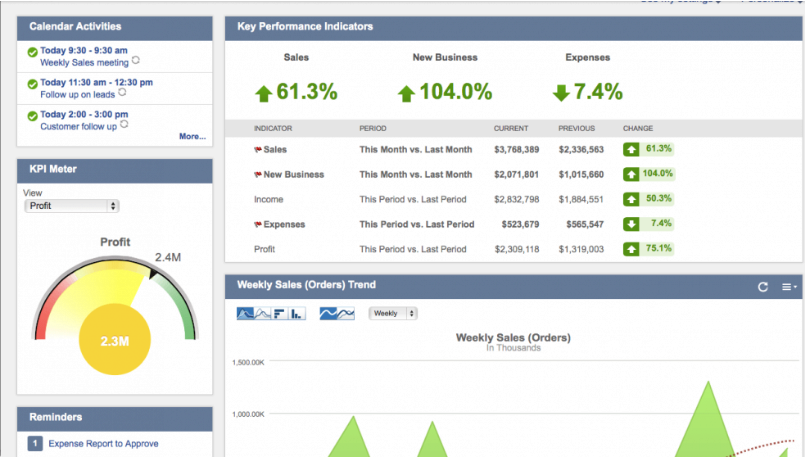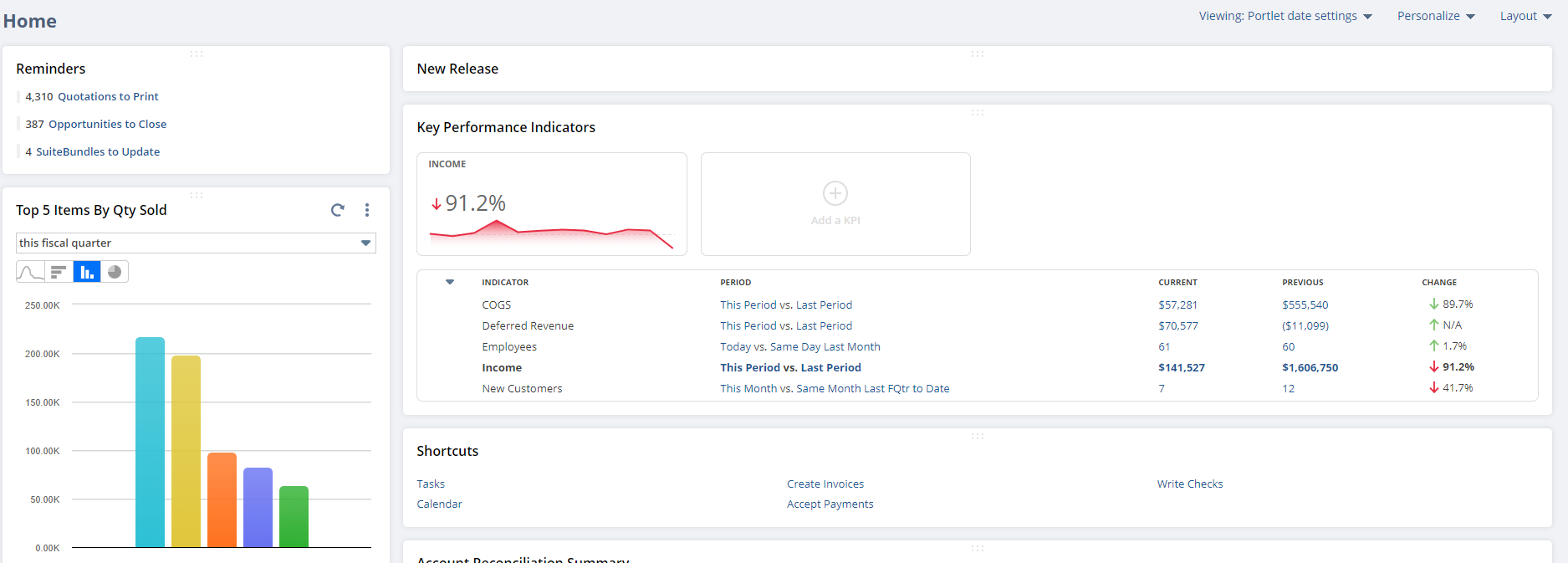In January 2019, NetSuite released its newest and most advanced update, NetSuite 2019.1. Packed with a variety of new and valuable enhancements, directed towards creating a more advanced and streamlined user experience.
Throughout the upcoming weeks, we’re going to be running you through some of NetSuite’s newest and most notable features. For today, we’re going to start with the most aesthetically pleasing update: the new and improved NetSuite dashboard.
For a complete look at all of NetSuite’s new features, you can access the NetSuite 2019.1 Release Notes here. If the release notes are a little technical for your taste, stay tuned for our simplified explanations.
NetSuite’s Newest Update: NetSuite 2020.1
Just popping in here to let you know that NetSuite 2020.1 is here and will be available to all customers as of February 14th, 2020.
Once you’ve checked out this article, check out our NetSuite 2020.1 Release Notes to learn about the newest features and enhancements.
That being said, these new updates are in addition to those you read about in this article, so updates within these release notes still apply.
Happy reading!
Why Did NetSuite Update their Dashboard?
You may be asking “why did the dashboard need to be updated”? If you enjoy a clean and sleek interface, then you may already know the reason, and you’re more than grateful.
The future is about enhancement and innovation, and NetSuite is always seeking to improve their look and usability to adapt to what they know their users want and expect from their ERP systems. The new 2019.1 dashboard is an example of that.
NetSuite 2019.1 introduces a newer, sleeker and more user-friendly interface. Its look and usability is miles ahead of its predecessor.
Let’s compare the old and new dashboards for a clearer picture.
Old vs. New NetSuite Dashboard
The improvements are clear and also quite visually appealing. If you need a refresh, take a lot at the picture of the old dashboard below.

Now for the grand reveal, view the new dashboard below.

At first glance, you can see that the older NetSuite dashboard is significantly clunkier, with a thicker panel and larger text. As a result, the older dashboard generally appears more cluttered.
In comparison, the Netsuite 2019.1 dashboard displays more information in a less cluttered manner. The borders are thinner, the text is smaller, and sections to flow into each other in a streamlined way.
Now let’s break down some of its new features.
NetSuite 2019.1 Dashboard Features
1. Personalized Dashboard
Depending on your business’ core necessities and specific business model, you can personalize your dashboard with the sections or features that you need the most. Drag and drop to pin your most-used sections on the dashboard for easy access.
For example, you can keep track of your day directly from your dashboard by adding your calendar. Connect your personal or professional calendar to view meetings, events or whatever else you may have planned.

You can also add new events to your calendar.

2. Visual Data Overview
The simplified user interface gives you a complete visual data overview.
- Access advanced data analytics in the form of a chart or graphical representations.
- Choose and customize different charts and graphs.
- And add graphs to keep track of your organization’s KPIs and compare your results to previous months or years.

You can also add custom graphs, such as line graphs, to measure employee trends.

NetSuite 2019.1 is packed full of new features and enhancements, and the dashboard is just one of them. Stay tuned to discover more.
In the meantime, is your business ready to make the most out of the new update? We can provide you with a screening prior to any new update to ensure your customizations carry over without a hitch! Learn more about it here.
Request More Info From an Expert








